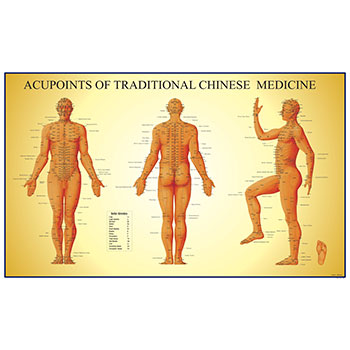One of the lesser-known benefits of acupressure is its ability to stretch and release tight fascial tissue. In this article, we’ll explore the use of ball acupressure for fascial tissue stretching and the key acupressure points that can help.
Understanding Fascial Tissue
Fascial tissue is the connective tissue that surrounds and supports muscles, bones, and organs. It is made up of collagen fibers and other proteins, and it plays an important role in helping our bodies move and function properly. Unfortunately, over time, fascial tissue can become tight, restrictive, and painful, leading to a variety of conditions such as chronic pain, limited range of motion, and poor posture.
The Power of Ball Acupressure

Ball acupressure is a powerful tool for stretching and releasing tight fascial tissue. By using a ball to apply pressure to specific acupressure points, you can stimulate the body’s natural healing processes and improve circulation to the affected area. This can help to break up adhesions, increase flexibility, and reduce pain.
Acupressure Points and Fascia
There are theories that acupressure meridians and points are also located within the fascia. When pressure is applied to an acupressure point, it will help stretch the fascia and allow the muscles and bones to move more freely. It also aids in the flow of lymph and blood. The pressure on acupressure points produces piezoelectric currents that travel along the acupressure meridians. The Fascia system is the Highway by which acupressure travels!
Fascia Tissue and Piezoelectricity
Piezoelectricity is the ability of certain materials, such as crystals and ceramics, to generate an electrical charge in response to mechanical stress or pressure. The fascia within our bodies is one of those materials that can generate this type of tiny charge.
Acupressure’s Influence on the Nervous System
It is also thought that acupressure can influence the nervous system through the fascia, which is richly innervated with sensory receptors. The fascia is thought to help transmit the effects of the acupressure to the nervous system, which then sends signals to the brain to release certain chemicals, such as endorphins, which can have pain-relieving effects. Recent research has shown that acupressure may also have an effect on the body’s electrical signals. Studies have found that acupressure on specific points can change the electrical conductivity of the skin and alter the activity of the nervous system.
How to Perform Ball Acupressure for Fascial Tissue Stretching
- Find a suitable ball: Choose a soft, pliable ball that provides enough pressure without causing discomfort.
- Locate the acupressure points: Identify the specific acupressure points related to the area of tight fascial tissue.
- Apply gentle pressure: Lie down on a comfortable surface and place the ball under the targeted acupressure point.
- Roll the ball: Move your body gently to roll the ball over the acupressure point, allowing it to release tension in the fascia.
- Breathe deeply: As you perform ball acupressure, focus on your breath to enhance relaxation and promote better results.
Key Acupressure Points for Fascial Tissue Stretching
- Pericardium 6 (PC6): Located on the inside of the forearm, this point helps relieve tension and tightness in the chest and upper body.
- Gallbladder 20 (GB20): Situated at the base of the skull, this point is beneficial for releasing tension in the neck and shoulders.
- Bladder 40 (BL40): Found at the back of the knee, this point helps relieve tightness in the hamstrings and calf muscles.
- Bladder 23 (B-23): Located near the lower back, this point is effective for addressing lower back pain and tension.
- Stomach 36 (ST-36): Situated on the lower leg, this point promotes overall relaxation and helps with various fascial iss

Safety Precautions
While acupressure is generally safe, it is essential to keep some safety precautions in mind:
- Consult a healthcare professional before starting any new therapy or if you have specific health concerns.
- Apply gentle pressure and avoid overexertion to prevent injury.
- If you experience pain or discomfort during acupressure, stop immediately and seek medical advice.
Conclusion:
Acupressure is a versatile and effective technique for addressing various health issues, including the stretching and release of tight fascial tissue. By stimulating specific acupressure points, we can promote healing, enhance flexibility, and alleviate pain. The fascinating interplay between acupressure and fascia highlights the complexity and interconnectedness of the human body’s healing mechanisms.
FAQs
- Is acupressure safe for everyone?
- Acupressure is generally safe for most people; however, it is always best to consult a healthcare professional, especially if you have underlying health conditions.
- Can acupressure completely cure fascial issues?
- While acupressure can be beneficial in relieving fascial tension and promoting healing, it may not completely cure chronic fascial issues. It is often used as a complementary therapy alongside other treatments.
- How often should I perform ball acupressure?
- The frequency of ball acupressure depends on the severity of your fascial issues and your body’s response to the therapy. Start with a few minutes each day and gradually increase as needed.
- Can I perform acupressure on myself or do I need assistance?
- Acupressure can be self-administered, but having a knowledgeable practitioner assist you can provide more targeted and effective results.
- Are there any side effects of acupressure?
- Acupressure is generally safe and has minimal side effects. However, some people may experience temporary soreness or mild discomfort after a session.
